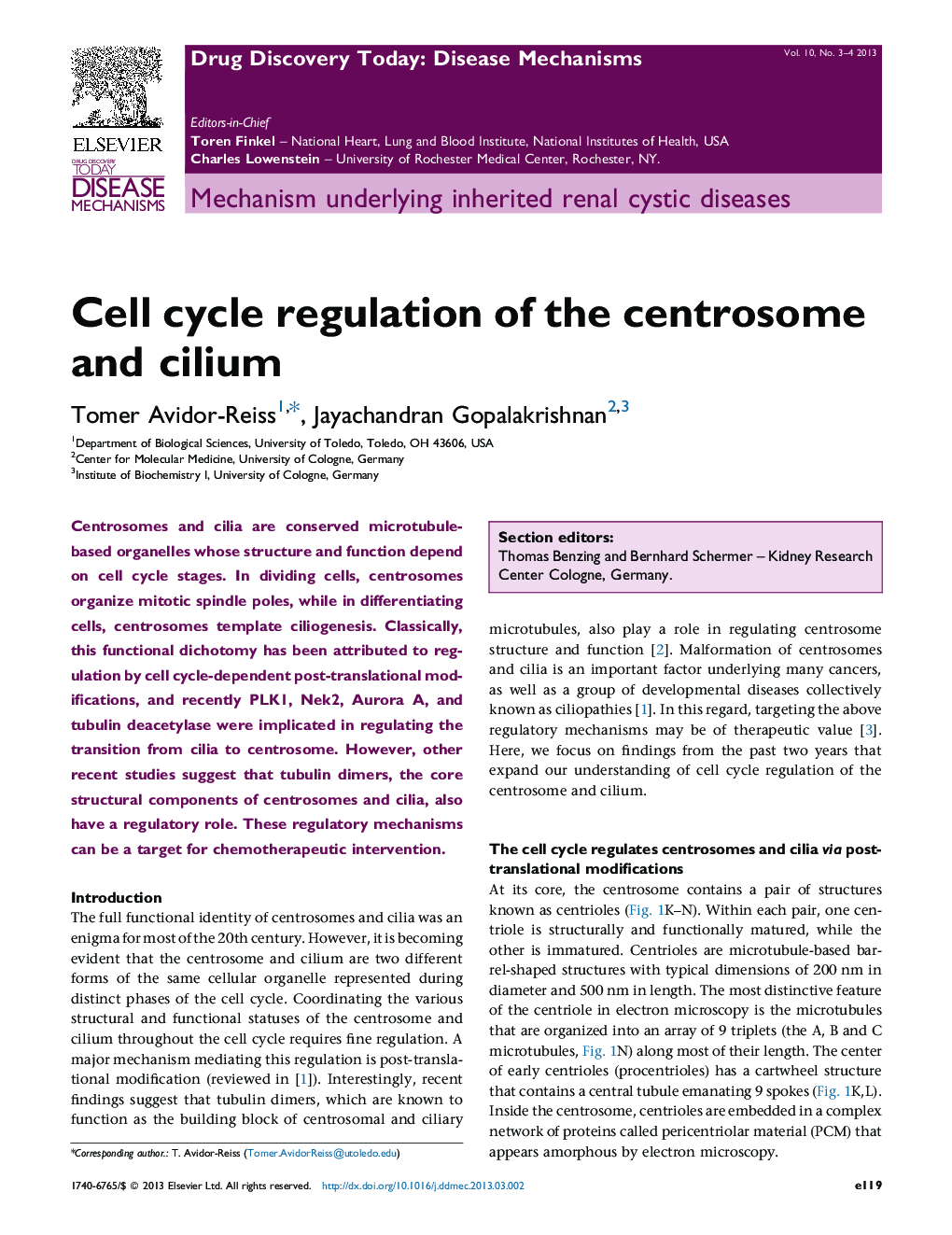| Article ID | Journal | Published Year | Pages | File Type |
|---|---|---|---|---|
| 2081714 | Drug Discovery Today: Disease Mechanisms | 2013 | 6 Pages |
•Centrosomes and cilia are distinct functional states of the same organelle.•Cell cycle-dependent modifications regulate centrosome functional changes.•Tubulin dimer is a molecular switch that also regulates centrosome functional changes.
Centrosomes and cilia are conserved microtubule-based organelles whose structure and function depend on cell cycle stages. In dividing cells, centrosomes organize mitotic spindle poles, while in differentiating cells, centrosomes template ciliogenesis. Classically, this functional dichotomy has been attributed to regulation by cell cycle-dependent post-translational modifications, and recently PLK1, Nek2, Aurora A, and tubulin deacetylase were implicated in regulating the transition from cilia to centrosome. However, other recent studies suggest that tubulin dimers, the core structural components of centrosomes and cilia, also have a regulatory role. These regulatory mechanisms can be a target for chemotherapeutic intervention.
Graphical abstractFigure optionsDownload full-size imageDownload as PowerPoint slide
